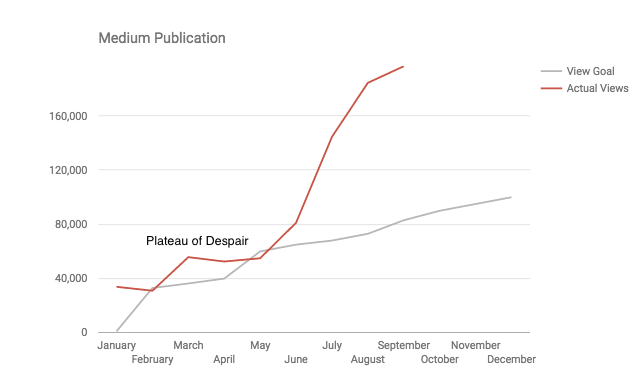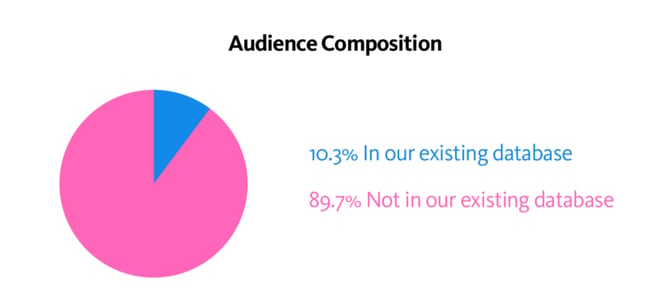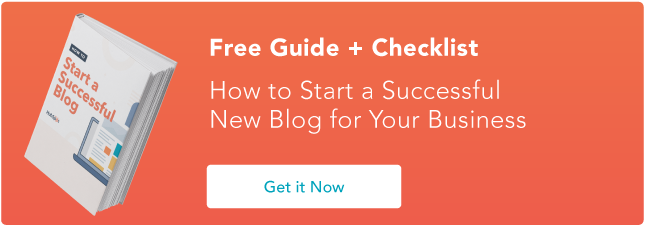
Editor's Note: This post was originally published on Context, a publication brought to you by Medium’s Creative Strategy team. Follow the publication to keep abreast of the best ideas in brand storytelling.
Two years ago if you asked me to explain the concept of content marketing I would start by talking to you about planets.
Imagine you are a marketer standing all alone -- like The Little Prince -- in the middle of a small planet. That planet is your website. Today it doesn’t get many visitors because it’s too small to notice and the universe is filled with bigger, more interesting planets.
But like planets, as you build up the mass of content around you, your website grows, and your gravitational pull becomes stronger. More content, keywords, and inbound links pulls more people your way. Content becomes your magnet.
This fundamental principle of content marketing has been a key part of HubSpot’s marketing playbook. Our “planet,” comprised of our website and blog, continues to fuel our company’s growth at a higher rate than any other marketing tactic. You may find it odd then, that about a year ago, we very quietly walked to the edge of our home planet and stepped off.

Amazing space cat by William Herring
Getting Behind the Idea of Publishing Off-Site
We started ThinkGrowth.org, an off-site publication on Medium.com. November 2016 marked the one year anniversary of ThinkGrowth.org and I wanted to share a little bit about what we’ve learned: why we did it, where we stumbled, and -- because benchmarks were hard to come by when we were getting started -- what our numbers looked like throughout the year.
Grab your space helmets. Here we go.
Let me make this very clear: you do not own your audience. Regular monthly visitors, big subscriber lists, well-trodden conversion paths give us the illusion that we own the attention of our audience -- but it is only an illusion. Attention is fleeting, and must constantly be earned.
While a lot of content discovery still happens through search, more and more people are consuming articles directly from platforms like Medium, Facebook, and podcasts. Medium has done a remarkable job with editorial curation and a loyal readership has followed, with a lot of this being driven by mobile. According to 2016 research from eMarketer, 86% of time spent on mobile devices is spent in apps rather than internet browsers. Apps like Medium have become new discovery platforms for content.
And these new discovery platforms come with notable differences in behavior. On the open web, people are searching, but on Medium, people come to spend time reading. This leads to much higher engagement on Medium and it’s this engagement, not search behavior, that fuels further discovery.
As the saying goes, sometimes you have to lose sight of your own shore to explore new lands. We have always tried to build our content strategy by paying attention to our readers over ourselves. Simply put, we decided to publish on Medium because we wanted to be where our readers are.
Breaking Through the New Publication Plateau
We’ve long admired the transparency of companies like Buffer who make a practice of openly sharing their own experiences and data. So, here’s our data from the last year. It wasn’t always pretty.

We started unassumingly on Medium. We didn’t launch with a bang or promotional push. We decided to just get some content up on the platform and see what it did. Our early posts were mostly cross-published content from the HubSpot blog (Medium makes it very easy to do this without hurting your own SEO). These first cross-posted pieces back in November of 2015 netted a few hundred views each, not too exciting.
But we quickly found that certain content just does better on Medium. As I mentioned, people come to Medium to read, not search for information on a specific topic. This makes Medium an inherently social platform where opinion pieces, personal accounts, or reaction posts often have a stronger performance than on our home blog.
Then a few months in, we attached the HubSpot handle to the publication. We saw a small jump as our social followers started to be able to find us and our content better, but the volume of views still wasn’t outstanding. We were making progress, but it was slow.
Optimizing for People After Years of Optimizing for Search
The first break-out post we ever had flew to the top of our most-read list mainly because it was highlighted by Ev Williams. And yes, while Ev is the mayor of Medium, this isn’t about Ev in particular, but rather the underlying point that Medium is a network. Anyone who has built up a following on Medium, whether it be the founder or a talented writer can have a major ripple effect on the visibility of an article just by interacting with it.
We’ve seen that interactions from highly followed readers carry the heaviest weight, but any interaction can make a big difference. We ran an analysis on the correlation between various values and views for all of our articles so far. For us, the most strongly correlated factor with views is recommends (r=0.77). What I like about this lever is that it really is about the quality of the writing. Green-hearted recommendations aren’t typically fooled by click-bait titles, keyword stuffing, or any other shortcut. Recommends come after considered reading.
Another way we started optimizing for people was opening up our publication doors. We’ve seen our best success by finding writers on the rise on Medium and syndicating content they’ve created -- exposing both them and ourselves to a new audience. Guest contributors have fueled the growth of our audience and brought in a diversity of perspectives that have made our entire anthology better. We’ve published a piece from the CEO of Litmus Paul Farnell and one from the CEO of Mattermark Danielle Morrill. We’re seeing that the best content on ThinkGrowth.org isn’t about us, nor is it necessarily by us.
Discovering the Power of a Built-In Audience
People talk a lot about the power of Medium’s built-in audience. What they don’t tell you is how expansive and varied that audience can be. One of our biggest concerns when getting started with Medium is that we would be preaching to the same choir. But after doing some analysis of our comparative audience across the two sites we discovered that only about 10% of our Medium followers were previously known to us at HubSpot.com.

This is incredibly powerful. HubSpot has been writing content for more than ten years. Our onsite blogs get more than 4.5 million visitors a month. Discovering this new audience pocket feels like we’re showing up a friend’s party after 10 years of hosting at our own place, and we find a whole new group of wonderful people, and they’re like, “Hey! It’s cool you finally left your own little planet.”
Deciding How to Measure It All
Measuring success on Medium is tricky. First, the rules for success are so different. Second, Medium stats are detached from the rest of our analytics. Third, Medium’s analytics dashboard just doesn’t allow you to go very deep. You can look at total number of views, follower count, number of interactions, time spent reading and so on — but these are very surface level.
Fans of the musical Rent at HubSpot will always remember the day our publication crossed five hundred twenty-five thousand six hundred minutes of reading time.

The day we discovered Sam Mallikarjunan was a Rent fan.
I’ll admit that as VP of Content I’m always a seduced by a good up-and-to-the-right readership chart. But neither of those may be entirely right when you think about what constitutes success on this platform.
If Medium really is a hybrid between a social network and a publishing platform, and success is determined by how engaging your content is, it may make sense to look at how active that follower base is. Heading into our second year as a publication we still plan on tracking everything (we’re data people after all) but we’d like to start paying particularly close attention to our number of weekly active readers. This is a much higher bar than views and followers alone, but we think this is the best way to hold ourselves accountable as a publication.

A T. Blake Littwin original -- used in Brian Halligan’s reflections on evolving HubSpot from a startup to “scale-up."
Looking Ahead
Writing on Medium started as an experiment. Something that could help us stay on top of how reading habits are changing (And boy, are they changing). It wasn’t always the easiest year. We spent months studying our readership, reading advice from Medium editors (Elizabeth Tobey in particular), and talking with peers of ours like Kevan Lee who were also exploring the platform. Thanks to that advice and frankly the ruthless, almost superhuman, focus of Sam Mallikarjunan, Erik Devaney, and most recently Janessa Lantz we’re starting to get there.
We’ve learned enough in the last year to see the potential that exists when as a brand you take the risk of stepping beyond your home planet to explore new channels, platforms, and audiences. I’m happy to say that on the anniversary of our first exploration onto Medium, we’ve decided to increase our investment in that potential by spinning up a brand new team at HubSpot focused entirely on “offsite” content strategy.
We’re going to continue to iterate our publication to make it better. In the words of ThinkGrowth.org writer Sam Mallikarjunan, “We feel good about the growth we’ve achieved with the new blog and just a few writers, but there are even cooler things we haven’t done yet on Medium.”
Stay tuned.

from HubSpot Marketing Blog https://blog.hubspot.com/marketing/first-year-medium-lessons
No comments:
Post a Comment